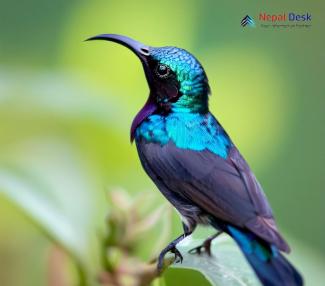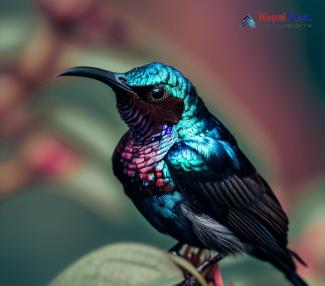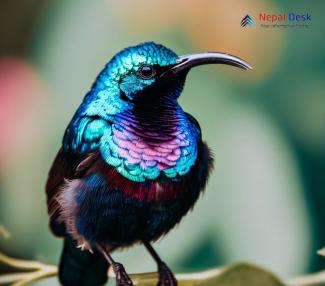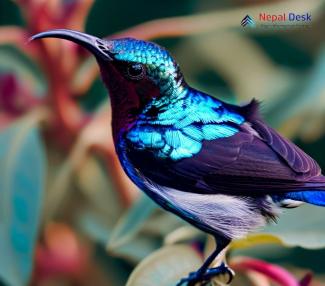The Purple Sunbird (Cinnyris asiaticus) is a small, vibrant bird that has captured the hearts of bird enthusiasts and nature lovers alike. In this article, we will dive into the fascinating world of the Purple Sunbird, exploring its taxonomy, physical features, habitat, diet, presence in Nepal, and an interesting point that sets it apart from other birds.
Taxonomy
The Purple Sunbird belongs to the family Nectariniidae, which consists of sunbirds and spiderhunters. Within this family, the Cinnyris genus houses more than 20 species of sunbirds. Specifically, the Cinnyris asiaticus species is found throughout various parts of Asia.
Physical Features
As its name suggests, this small bird showcases a stunning purple hue when sunlight reflects off its iridescent feathers. Males boast a distinctive metallic purple sheen with black wings and tails, while females display a duller olive-brown coloration with yellow underparts. Adult Purple Sunbirds typically measure around 10 cm in length and weigh between 7 to 12 grams.
Habitat
The Purple Sunbird inhabits a diverse range of environments such as forests, gardens, agricultural areas, and even urban settings. They adapt well to different surroundings as long as they have access to flowering plants due to their nectar-feeding habits.
Diet
These tiny creatures primarily feed on nectar from various flowers using their specialized brush-tipped tongues. Their diet not only provides them with essential energy but also helps pollinate plants as they move from one flower to another. Apart from nectar, Purple Sunbirds also consume insects and spiders as secondary food sources.
Presence in Nepal
Nepal boasts a rich avian biodiversity owing to its diverse topography and ecosystems. The Purple Sunbird is no exception and can be observed throughout Nepal's southern plains known as Terai. The foothills of the Himalayas also serve as a natural habitat for this bird species. Birdwatchers and nature enthusiasts can spot them in protected areas, such as Chitwan National Park and Bardia National Park, or even in well-vegetated areas near human settlements.
Interesting Point:
The Purple Sunbird showcases an intriguing breeding behavior called polygyny – a single male mates with multiple females in one breeding season. Males use their brilliant purple plumage and melodious calls to attract females, while females are responsible for building the nest, incubating the eggs, and raising the young.
In conclusion, the Purple Sunbird is a remarkable little bird that adds a splash of vibrant color to the landscapes it inhabits. Its fascinating taxonomy, physical features, and unique behaviors captivate birdwatchers and nature lovers alike. Thus, keeping an eye out for these shimmering beauties on your next visit to Nepal or other parts of Asia will surely be a rewarding experience.




